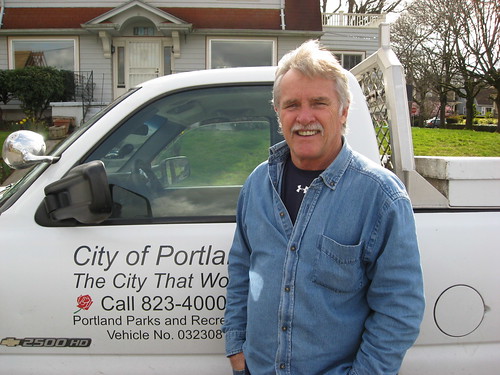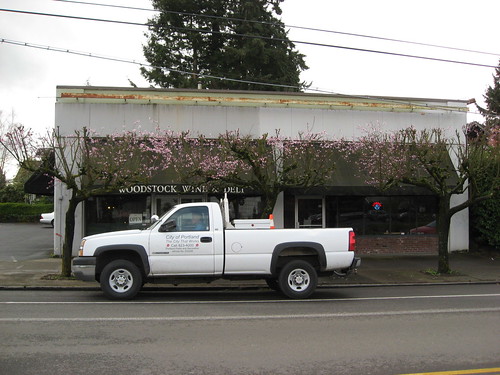Ride-along unearths tree removal policies

Sometimes the street tree inspection is done before the pickup truck is parked.
That’s what comes with 20 years of experience as a Portland Urban Forestry tree inspector.
Ned Sodja, one of eight urban forestry inspectors for Portland, is responsible for all residential street tree removal inspections in Southeast Portland.
Dealing with street tree removals—both fining for illegal removals and issuing permits for approved removals—Sodja often finds himself using his people skills as much as his tree knowledge.
“As an area inspector you gotta have a broad knowledge of trees, then you gotta communicate well, then you gotta be well-versed in customer service,” said Sodja.
As far as fines for violations go, Sodja, like a police officer, has some leeway for discretionary calls.
“Most of the time I won’t fine them but they’ll have to do something,” said Sodja, referring to the costs of properly replacing a street tree.

Portland street trees are planted in the strips between curbs and roads, an area owned by the city but the responsibility of home or business owners.
This fact is a common reason why unknowing citizens can be fined up to thousands of dollars for removing a street tree.
Upon paying the $35 application that gets Sodja on the scene for an inspection, the main criteria for removal is if the tree is dead, dying or dangerous.
At his first stop last Thursday, the street tree was an excellent candidate for removal because it was topped for utility lines, had chopped roots that had previously necessitated a sidewalk replacement, and most importantly, it was leaning precariously.
“If this tree had a big canopy it already would of fallen into the street,” remarked Sodja, also spotting decay in the tree. “This is a pretty easy call.”
With that decision, Sodja spray paints a small dot on the curb indicating the best location for a replacement tree, and then returns to his cab to take notes.
Taking off one of his four pairs of sunglasses in the cab, Sodja explained that being a city employee is often what supports his decision-making process.
“It’s all liability—how can I alleviate liability for the city,” he explained. “Everything I do out here I got to justify.”
At a later stop in Eastmoreland, Sodja listened to homeowners upset with a PGE blanket permit that called for the topping of old trees that came in contact with high-voltage power lines.
While sympathetic with upset homeowners, Sodja could find no fault with the utility company that is mandated by the Public Utilities Commission to cut the trees, nor could he blame the young men contracted to do the sawing and pruning.
“The lines were here way before the trees,” said Sodja. “They never should of planed these types of trees here.
“Sometimes reaching the middle ground is hard to do.”
Sodja, who also handles the entire nursery order for Portland Urban Forestry, works actively with an Eastmoreland tree association, making extra stops on his route to mark potential planting sites.
Noting his favorite street trees as the Green Vase Zelkova, the beech and the Tschonoski crab apple, Sodja supports tree plantings mainly because he knows, perhaps better than anyone else, trees don’t live forever.
“The maturity of Portland’s urban forest is getting too old,” said Sodja. “That’s why it’s good Friends of Trees started planting when it did.”
–Toshio Suzuki
